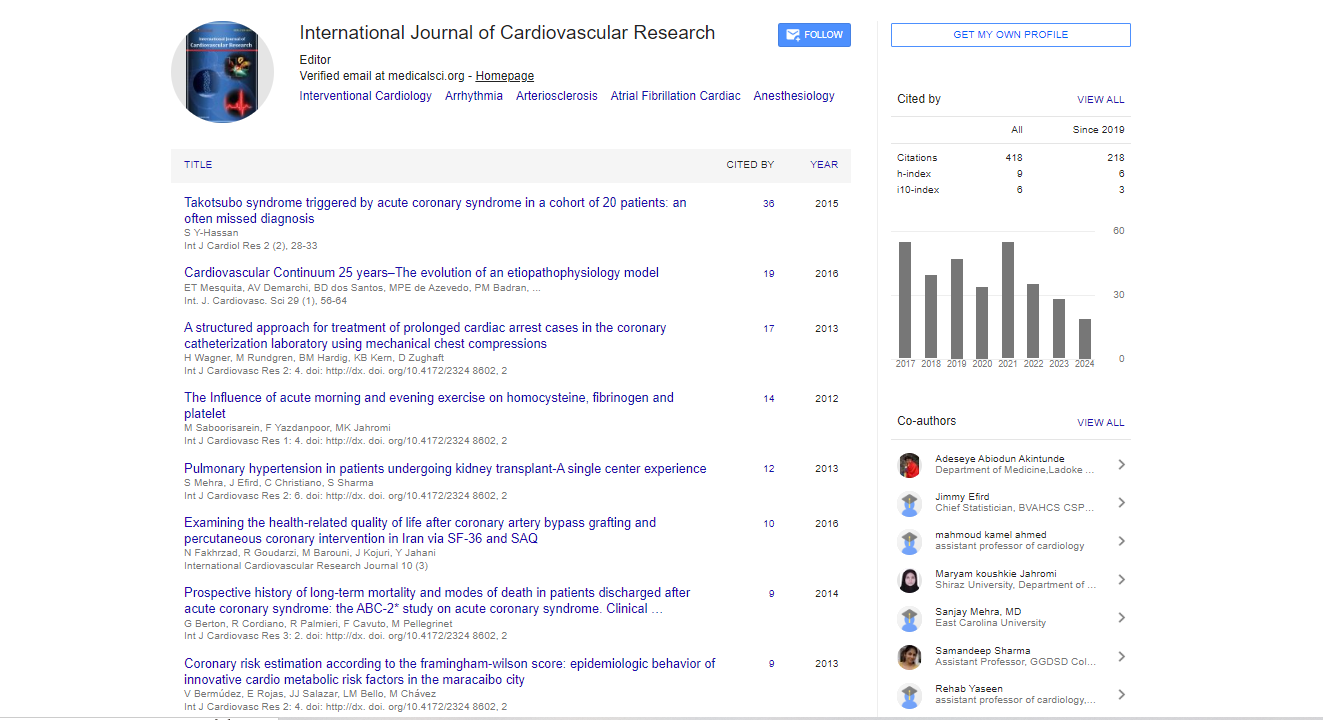Research Article, Int J Cardiovasc Res Vol: 7 Issue: 4
Relation between Age Group and Accessory Pathway Anatomical Location
Carlos Romério Costa Ferro*, Francisco de Assis Costa, Maria Alaíde Mendonça, Ivan Rivera, Pedro Henrique Albuquerque, Agenor Barros, Jadilma Mafra Barbosa, Fabiana Piech Nunes Ferro, Marcio Robério Costa Ferro, Claudio Cirenza and Angelo Amato Vicenzo de Paola
Residencial San Nicolas, F3 CEP 57046 361, Maceió-AL, Brazil
*Corresponding Author : Carlos Romério Costa Ferro
San Nicolas residence F3, Maceio, Alagoas CEP: 57046-361, Brazil
Tel: (82) 3328-6802
E-mail: crcferro@uol.com.br
Received: April 30, 2018 Accepted: May 14, 2018 Published: May 18, 2018
Citation: Ferro CRC, de Assis Costa F, Mendonça MA, Rivera I, Albuquerque PH, et al. (2018) Relation between Age Group and Accessory Pathway Anatomical Location. Int J Cardiovasc Res 7:4.
Abstract
There are many factors that explain this relation between APs and age, and one possible mechanical explanation may be differences in electrophysiological properties, such as conduction speed and refractory period of APs and atrio- ventricular nodes. The objective of this study was to evaluate the correlation between age groups and gender, presentation pattern (manifest or concealed) and anatomical distribution of APs. Although APs have a genetically mediated transmission model, there is no uniformity in their presentation, and differences can be observed in their distribution depending on gender and onset age, in clinical and electrocardiographic manifestations.
 Spanish
Spanish  Chinese
Chinese  Russian
Russian  German
German  French
French  Japanese
Japanese  Portuguese
Portuguese  Hindi
Hindi 



